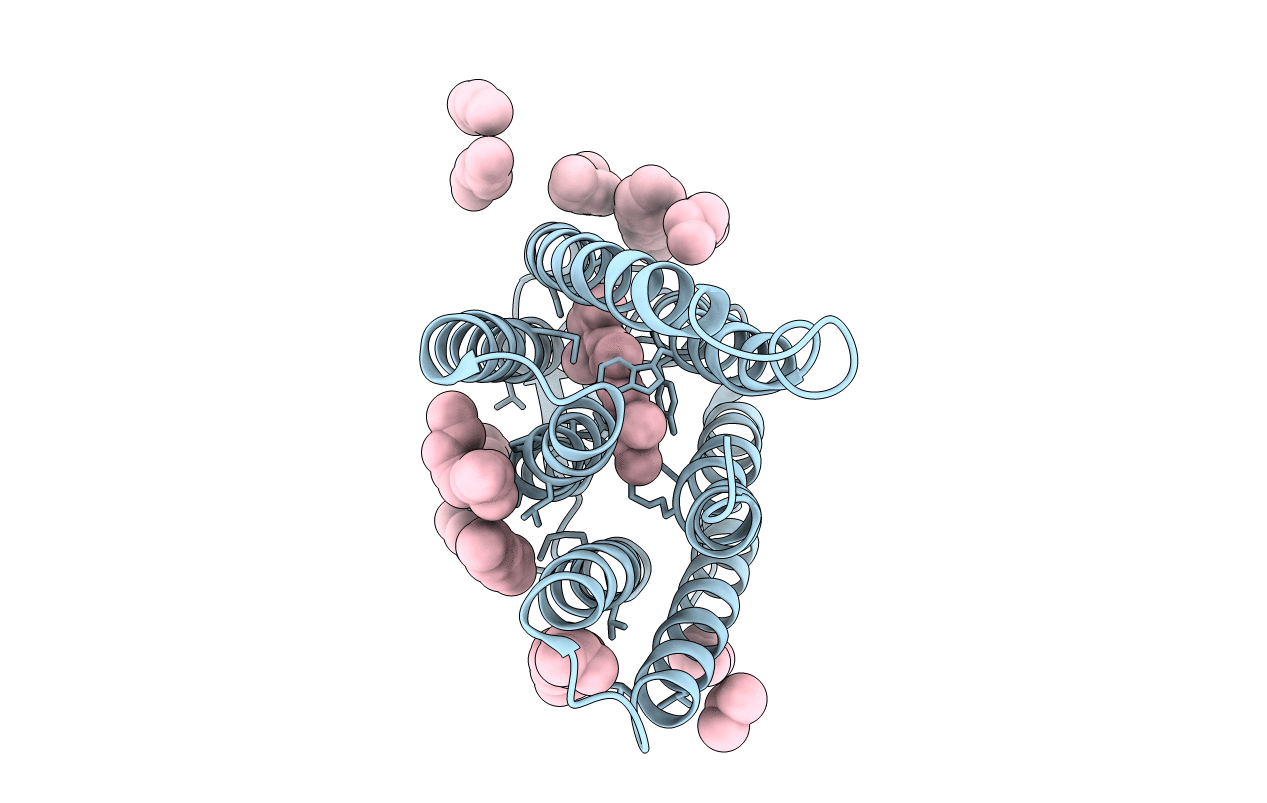
Deposition Date
2012-06-22
Release Date
2013-02-27
Last Version Date
2024-10-16
Entry Detail
PDB ID:
4FPD
Keywords:
Title:
Deprotonation of D96 in bacteriorhodopsin opens the proton uptake pathway
Biological Source:
Source Organism:
Halobacterium sp. NRC-1 (Taxon ID: 64091)
Host Organism:
Method Details:
Experimental Method:
Resolution:
2.65 Å
R-Value Free:
0.24
R-Value Work:
0.22
R-Value Observed:
0.24
Space Group:
P 63


